Hey all! Real Farmer Jeff here.
When summer temperatures climb and the sun becomes relentless, even the healthiest garden can begin to struggle. When summer heat peaks, even heat-tolerant plants can struggle – especially in hot, dry climates like mine in Utah. The hottest part of the year is always a critical time for my garden.
Enter: shade cloth.
It’s one of the simplest tools you can use to protect your plants from heat stress, leaf scorch, and sunburn during the hottest part of the season. In this blog post, I’ll explain what shade cloth is, what type to get, and how to use it. Let’s get started!
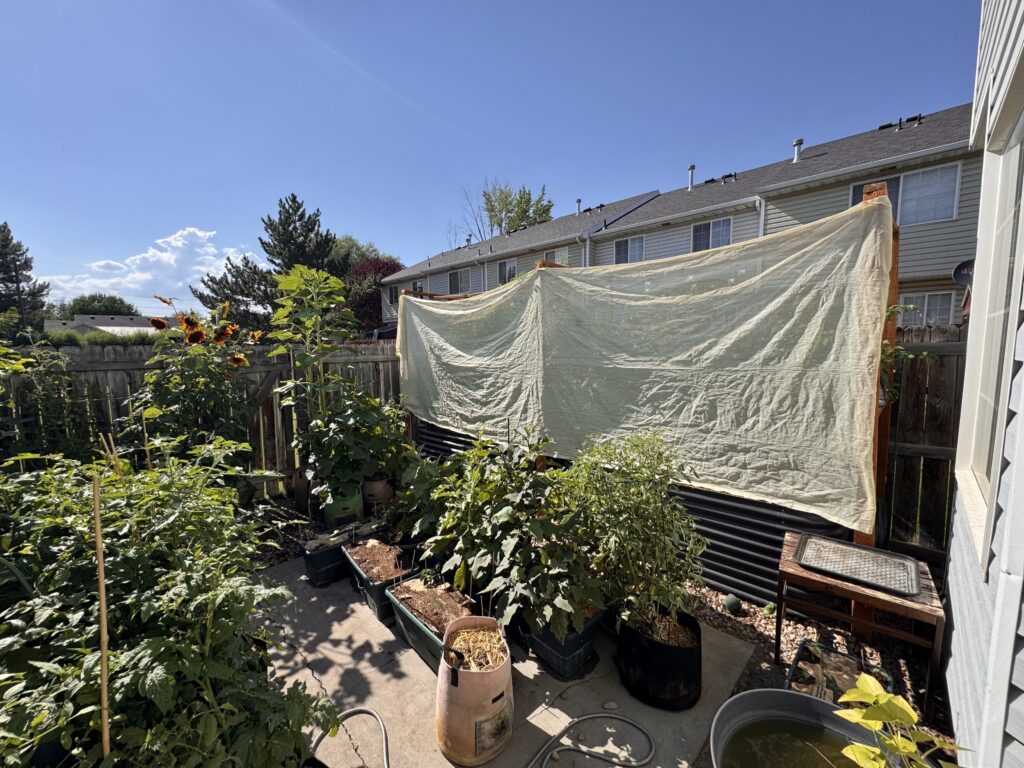
What Is Shade Cloth?
Shade cloth is a lightweight, UV-resistant fabric designed to filter out a percentage of sunlight. It’s typically made from knitted or woven polyethylene and allows air, light, and water to pass through while reducing solar radiation.
Gardeners often use shade cloth to:
- Protect crops from sunscald and wilting
- Lower temperatures around plants
- Slow evaporation and conserve moisture
- Improve seedling survival and transplant success
- For example, this year I protected my tomatoes for a few days after transplanting until they were completely established to reduce stress
Common Shade Cloth Percentages and Their Uses
Shade cloth is categorized by the amount of light it blocks – referred to as its shade percentage. Choosing the right one depends on your climate and the type of crops you’re growing.
If you’re only buying one kind, 50% shade cloth is the most versatile. It provides excellent protection without compromising too much sunlight for fruiting plants.
| Shade %: | Ideal For: |
| 30–40% | Heat-tolerant crops like tomatoes, squash, and peppers in hot climates. |
| 50–60% | Leafy greens, lettuce, herbs, and general vegetable garden protection. A great all-purpose range. |
| 70–80% | Seedlings, nursery plants, ornamentals, or use in extremely hot environments. |
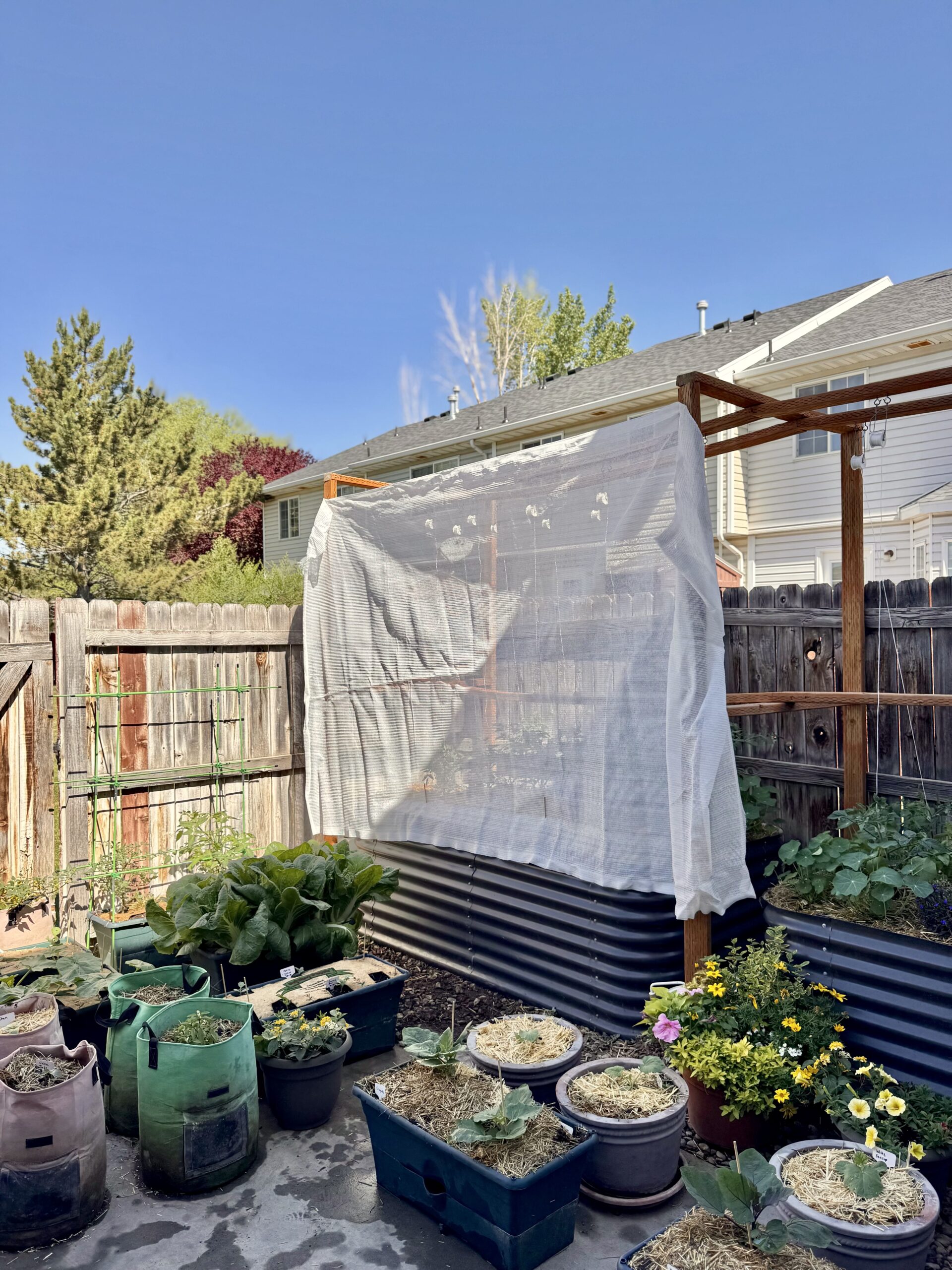
When to Use Shade Cloth
Temperature is a helpful guide when deciding whether to use shade cloth – but it’s not the only factor. Direct sun exposure, especially for long hours, can amplify heat stress even at moderate temperatures.
A plant growing in full sun from sun-up to sun-down will experience more heat stress than one with partial shade or some dappled light, even if the thermometer reads the same.
If your plants are exposed to 6+ hours of intense midday or afternoon sun, it’s a good idea to consider shade cloth during heatwaves or extreme UV days – even if the temperature isn’t in the danger zone yet. When to use shade cloth also depends on the heat resistance of the plant varieties you are growing.
Below is a general rule of thumb of when to use shade cloth:
| Crop Type: | Temperature to Consider Shade Cloth: | Why It Helps: |
| Lettuce & Greens | Above 75°F (24°C) with full sun | Reduces bolting and bitter flavor |
| Spinach & Cilantro | Above 70°F (21°C) in direct sun | Prevents premature flowering |
| Tomatoes | Above 85–90°F (29–32°C) + prolonged sun | Reduces blossom drop and sunscald |
| Peppers | Above 90°F (32°C), especially in afternoon sun | Helps flower retention and fruit development |
| Cucumbers & Squash | Above 90°F (32°C) + high UV index | Prevents leaf scorch and bitter fruit |
| Seedlings | Above 80°F (27°C), or exposed to full sun | Shields from transplant shock and leaf burn |
| Brassicas | Above 80°F (27°C), especially in late spring | Helps extend growing season into warmer months |
Can I Get Away Without Shade in High Temps?
Yes, sometimes. If your plants receive only morning sun, are partially shaded by trees or structures in the afternoon, or have been slowly acclimated to heat, they may tolerate higher temperatures without showing signs of stress. Humidity, soil moisture, and even wind can all influence a plant’s ability to thrive in heat. Shade cloth isn’t always required, but it acts as a safety net during:
- Sudden temperature spikes
- Prolonged heatwaves
- Transplanting or hardening-off periods
- UV index extremes
These are just general guidelines. Pay attention to how your specific plants respond, and don’t be afraid to experiment with short-term shade setups to find the right balance for your garden.
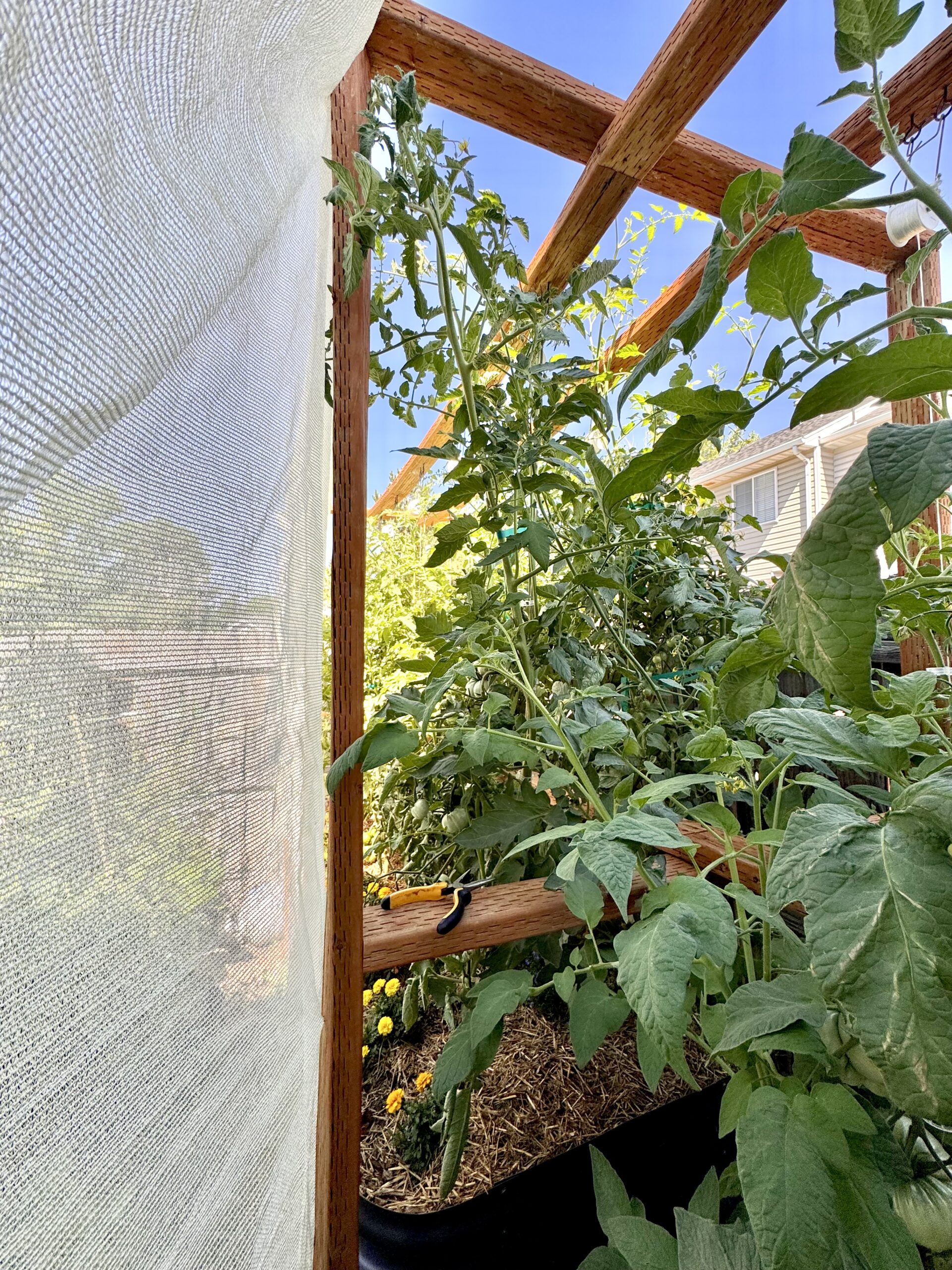
Where to Buy Shade Cloth
Buying shade cloth from the right place can save you a lot – especially if you need large pieces.
- Online:
- Greenhouse Megastore: Wide variety, custom sizes, often cheapest per square foot
- Amazon: Convenient but often pricier
- Locally:
- Farm supply stores (e.g., Tractor Supply, IFA, CAL Ranch)
- Landscape suppliers/Nuseries/Greenhouses
Tip: Always choose knitted over woven shade cloth—it’s more durable, tear-resistant, and easier to work with.
How I Use Shade Cloth in My Garden
One of my favorite and simplest methods for mounting shade cloth is by stapling it directly to my wooden trellis. This works great for:
- Covering my raised beds without much work
- Protecting tall crops like tomatoes with no problem
- Creating a semi-permanent structure that doesn’t flap in the wind if I decide to also staple the bottom
I use a heavy-duty staple gun and pull the cloth taut before stapling every couple feet along the frame. It is easy to roll up if I ever need to.
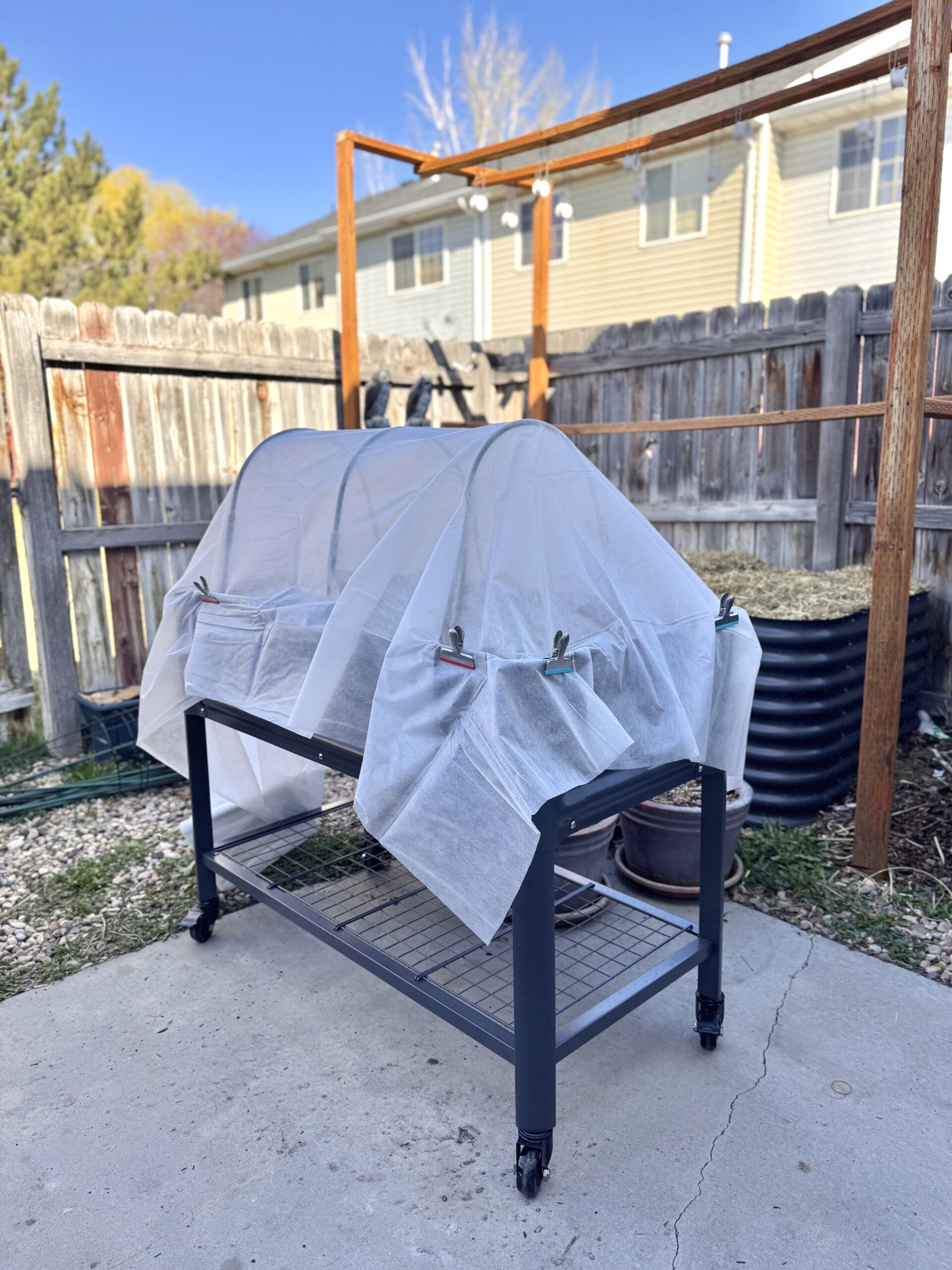
Other Tips for Using Shade Cloth Effectively
- Time Your Shade: You don’t need to shade your plants all day. Shade during the hottest part of the day (typically 12–4 PM) is enough to protect most crops. Position cloth east-west to allow morning and evening sun from the sides.
- Use It for Other Purposes: Shade cloth is incredibly versatile…
- Frost protection when layered over row cover
- Windbreak when stretched vertically along fencing
- Pest barrier for cabbage moths, birds, and grasshoppers
- Greenhouse cooling when draped on the outside in summer
- Raise the Cloth Above Plants: Keep the cloth suspended a few inches or more above your plants using hoops, stakes, or trellises. This allows for airflow, reduces humidity buildup, and prevents mildew or direct fabric-to-leaf contact.
- Cut and Customize: Knitted shade cloth won’t fray when cut, so you can easily trim it to fit your space. Add grommets for tie-downs or use clamps, zip ties, or bungee cords for flexible attachment.
- Store It Well: To extend its lifespan (5–10 years is common), dry the cloth before storing, roll it instead of folding, and keep it in a cool, dry place away from direct sunlight.
Have your own favorite way to use shade cloth? Share it in the comments or tag me in your garden photos – I’d love to see how you use it!
Thanks for reading along, guys! If you enjoyed this blog post, check out my other gardening blog posts:
- How to Start a Garden on a Budget for Under $100
- Essential and Nice-to-Have Garden Products for Your Perfect Setup
- My Garden Setup: 3 Best Garden Containers for Every Gardener
- Understanding Garden Light and Shade: A Simple Guide
- How to Build a Homemade Trellis Using Cattle Panel
Follow me on social media for daily content and instructional videos about gardening!
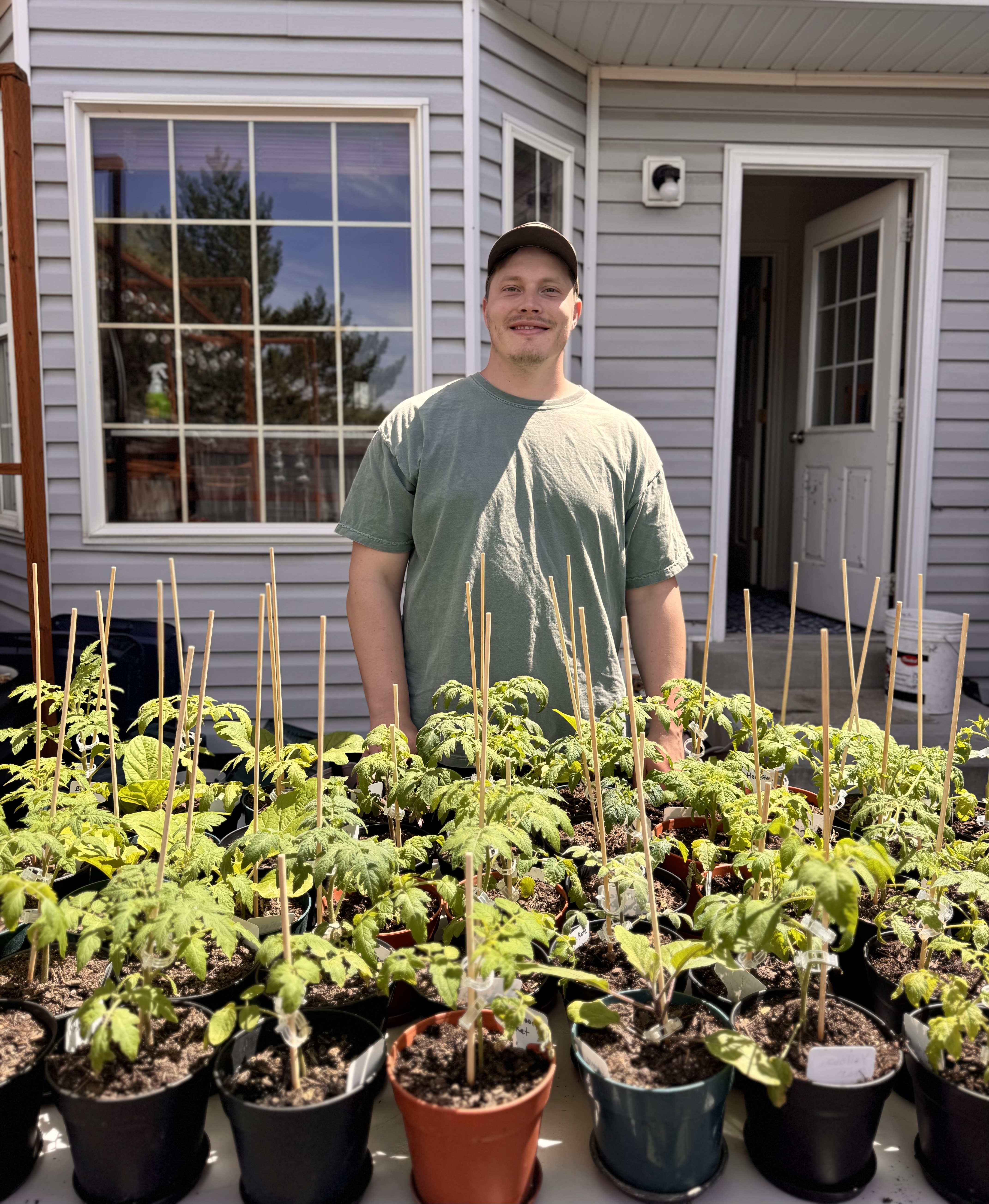

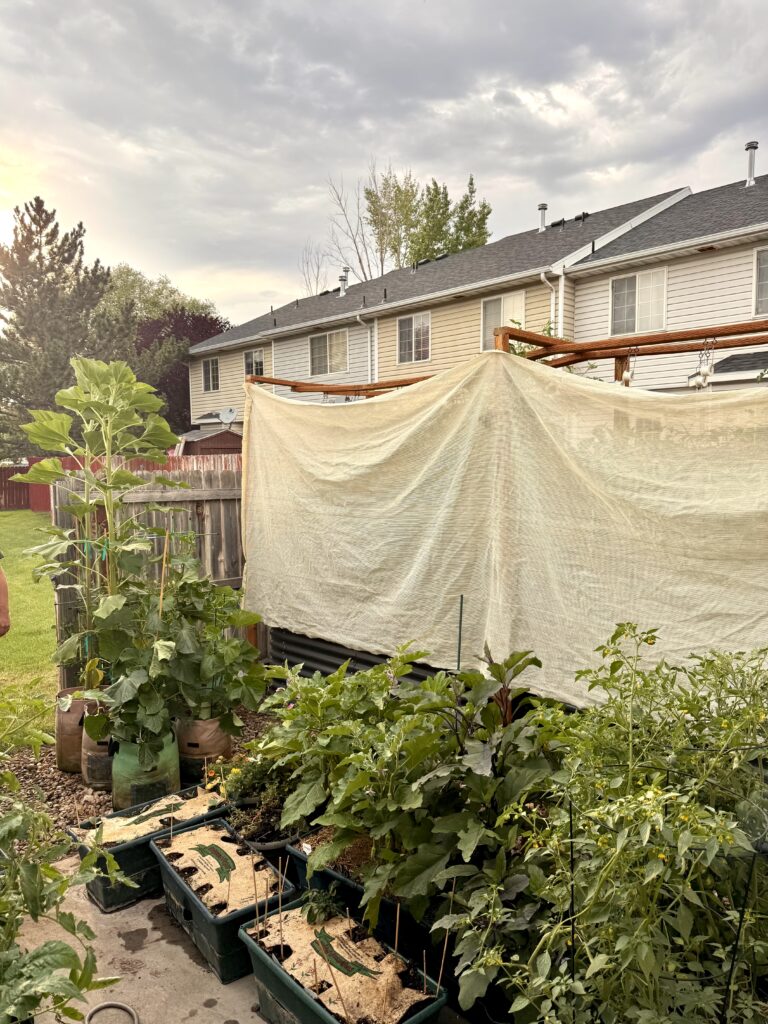
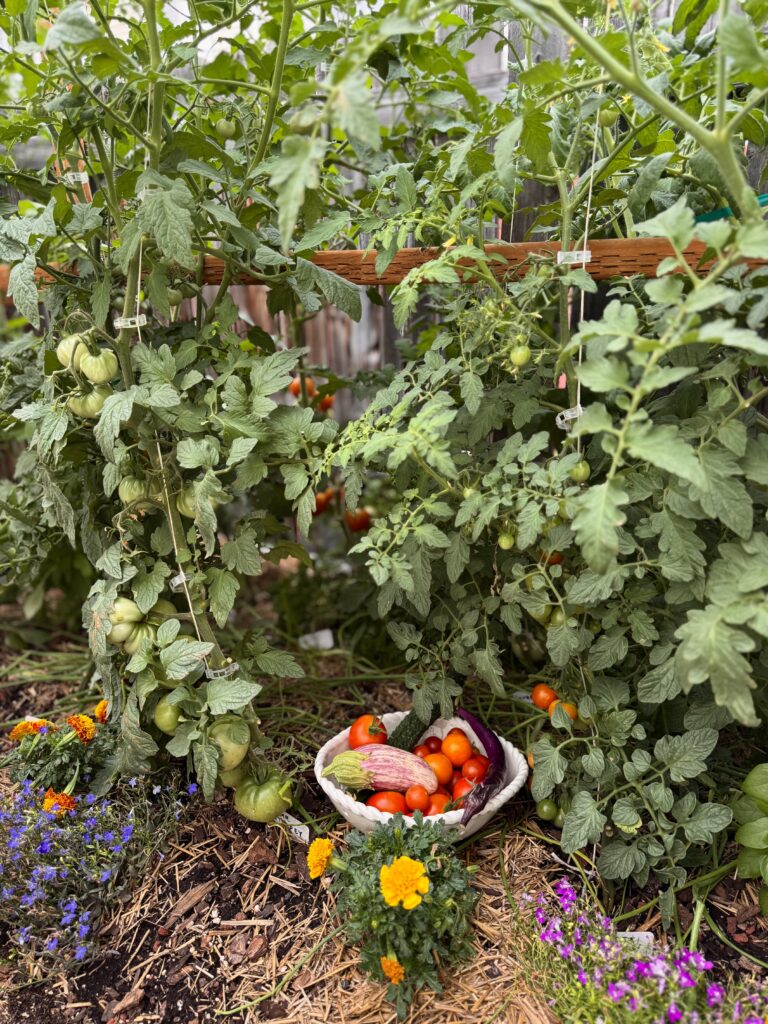
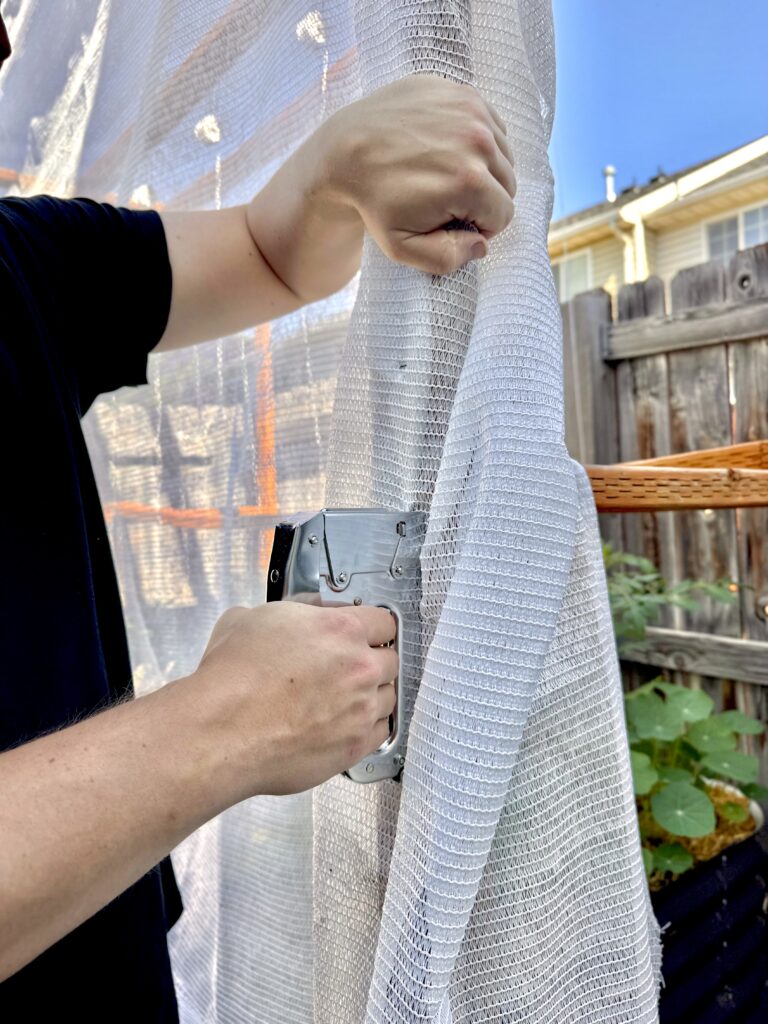
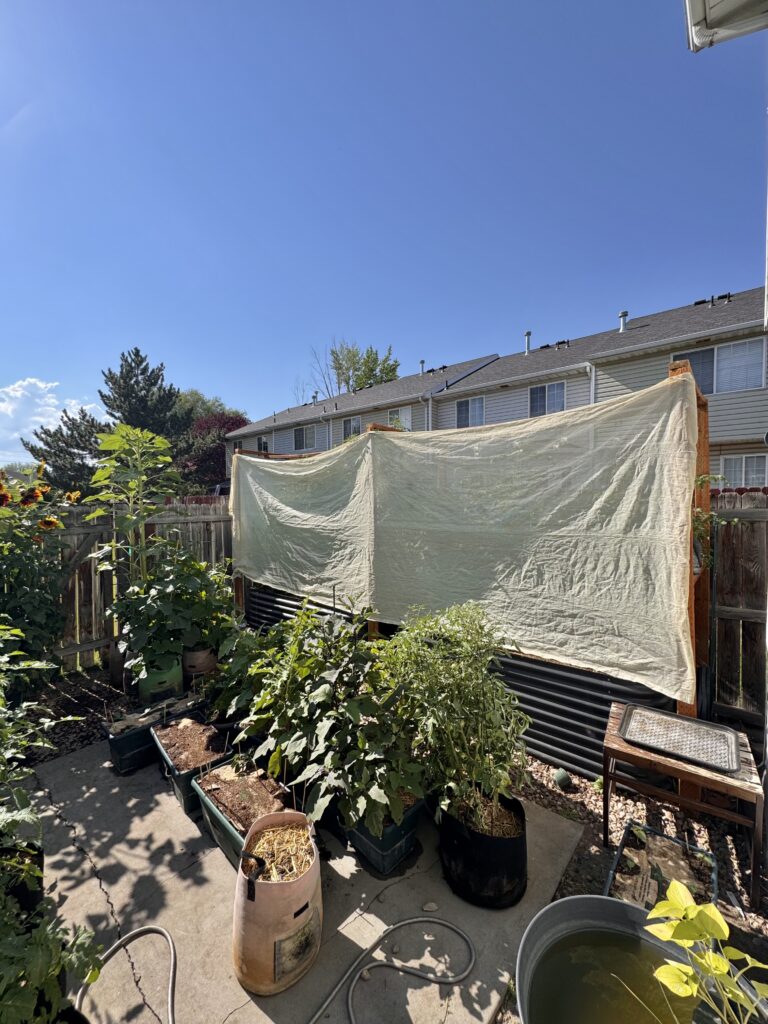



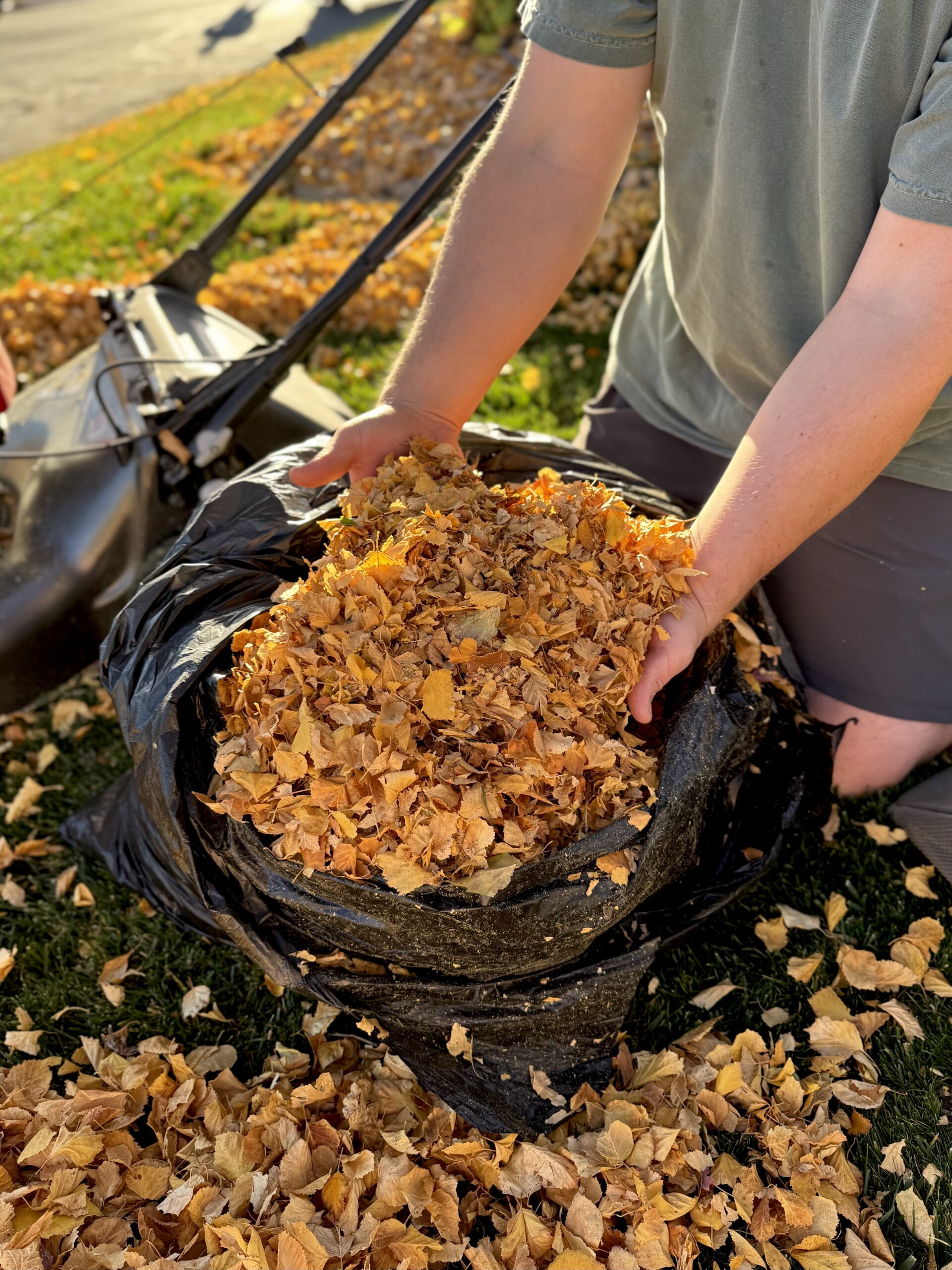
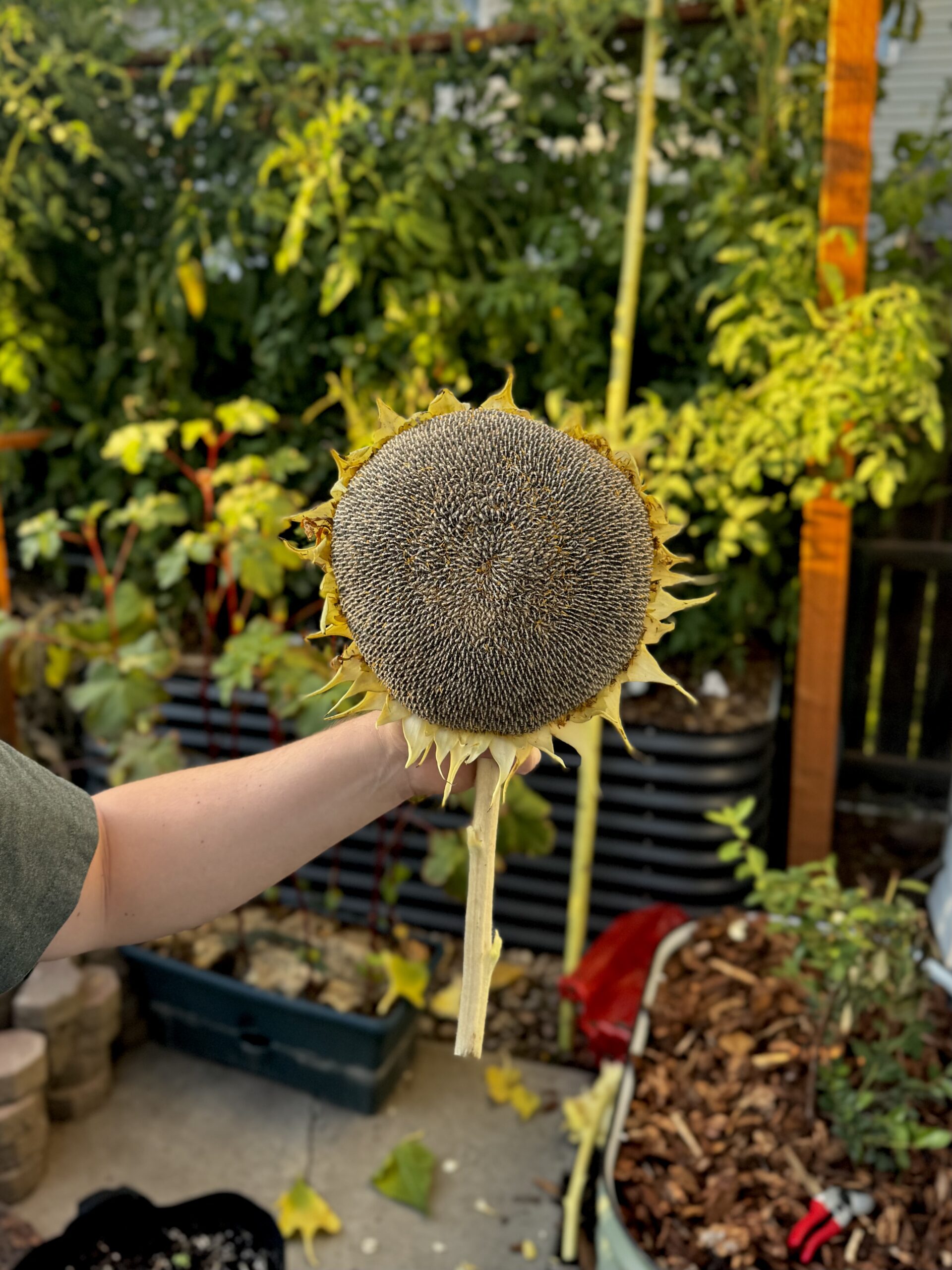
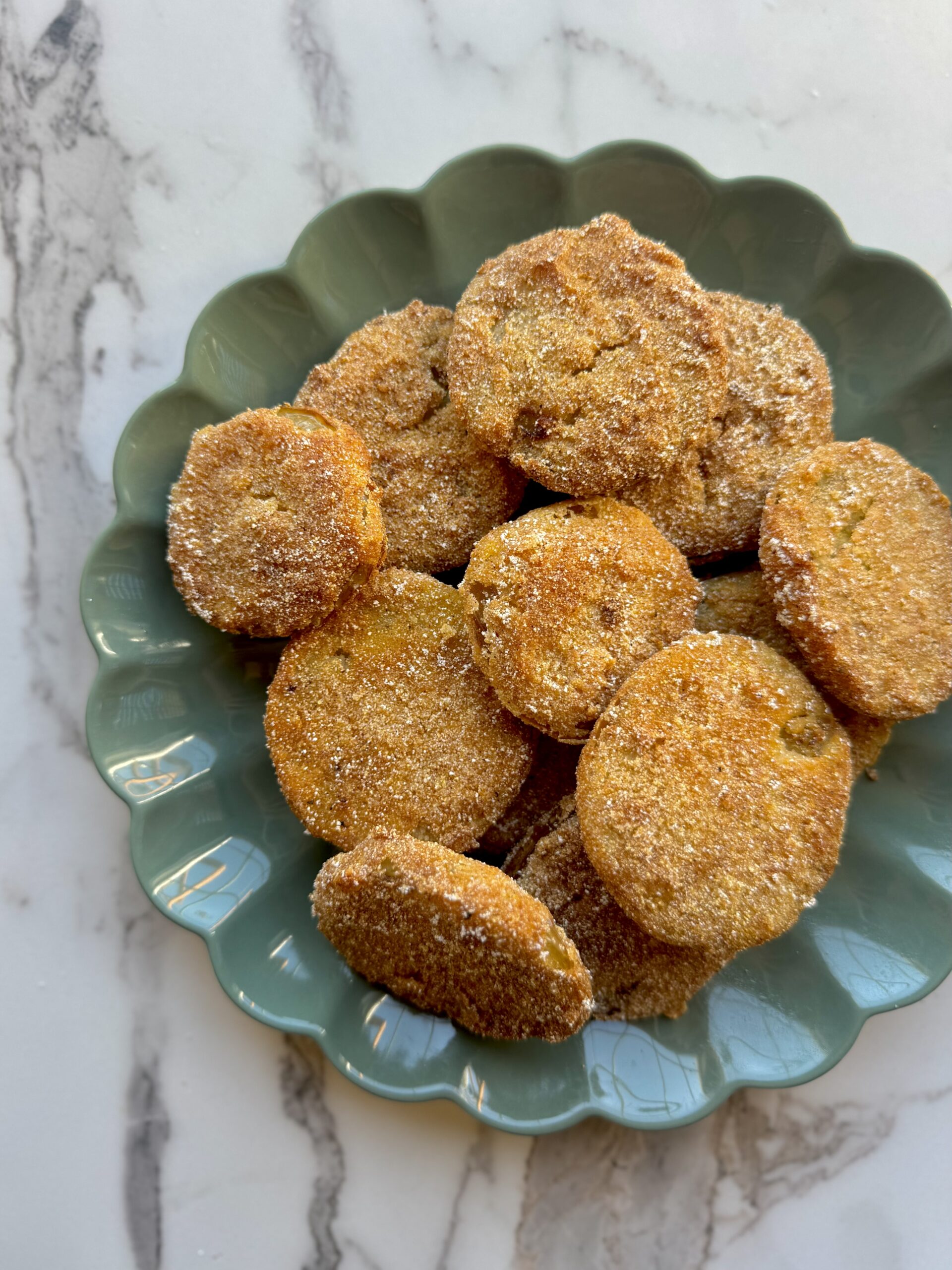
Thank you. I bought shade cloth for my garden and this is the first year my tomatoes have absolutely thrived. Thank you.
So glad to hear it! Keep up the good work Lauren!
This saved my garden too! Glad you are educating people about it